On Tuesday, we spent the morning browsing the Grand Bazaar of Tabriz. Wandering through the rāstā (bazaar alleyways), and occasionally crossing into other sections of the bazaar through old caravanserais, now converted into gardens. Each section of the bazaar specializes in a particular trade, for example: hats, shoes, carpets, jewellery, crockery, and more.
They say "A picture is worth a thousand words", and for that reason I’ve attached a lot of photos. I hope you get a sense of the style, scale and feel of our important and historic bazaar.
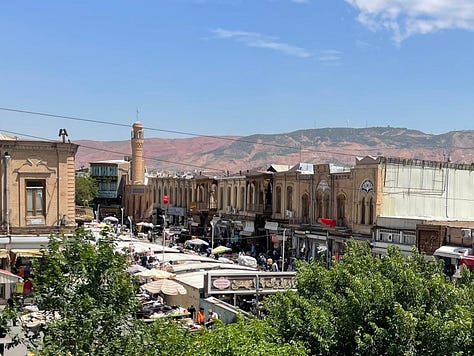
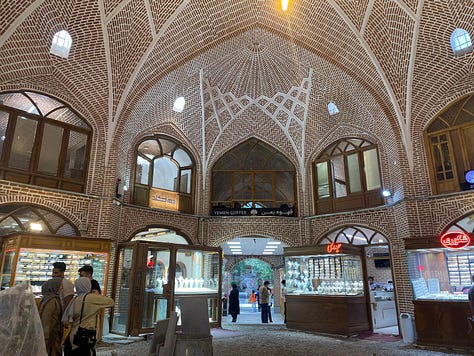
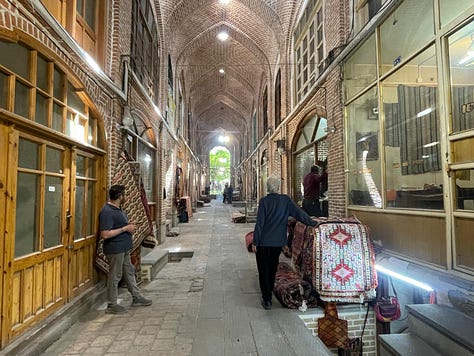
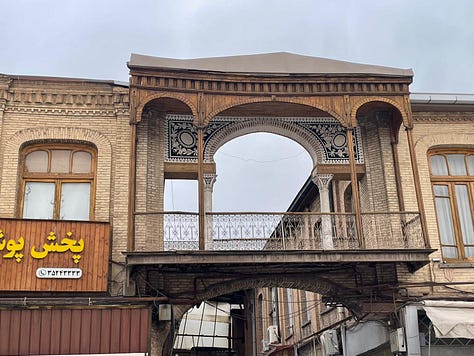
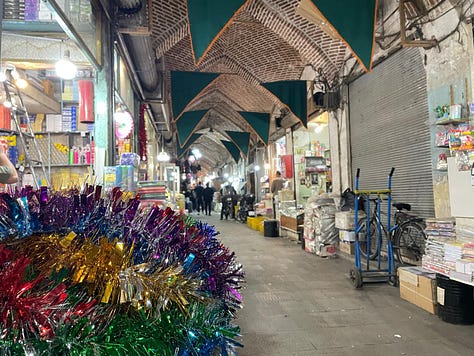
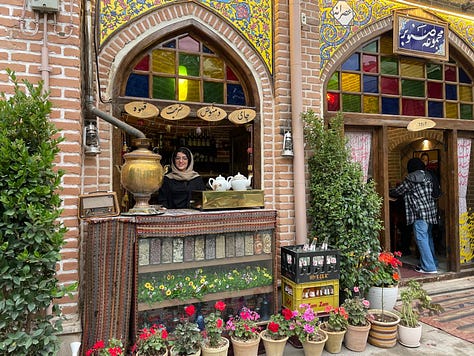
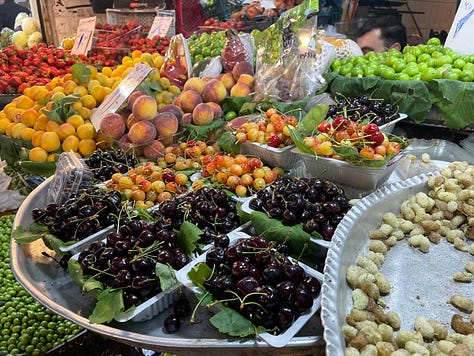
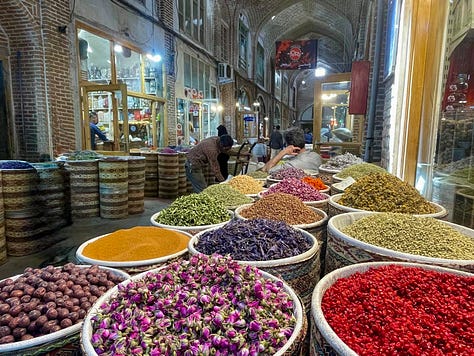
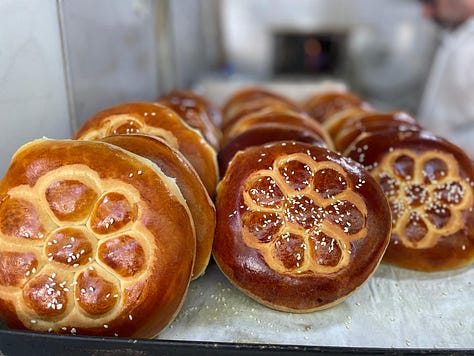
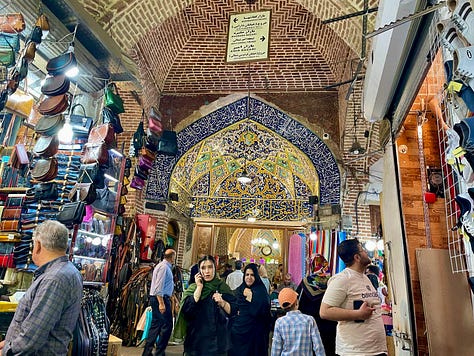
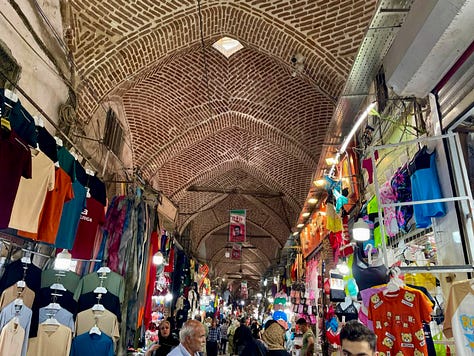
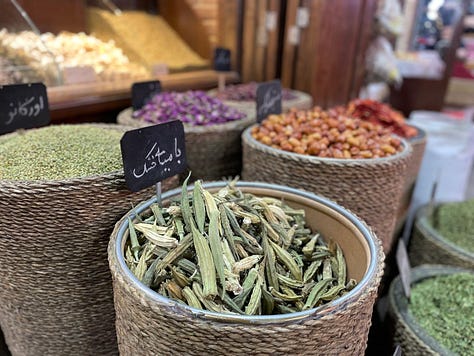
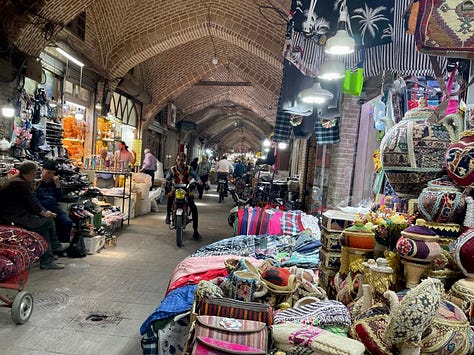
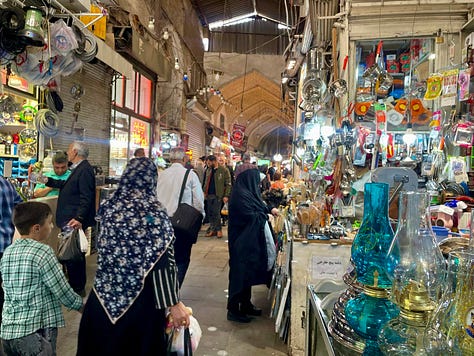
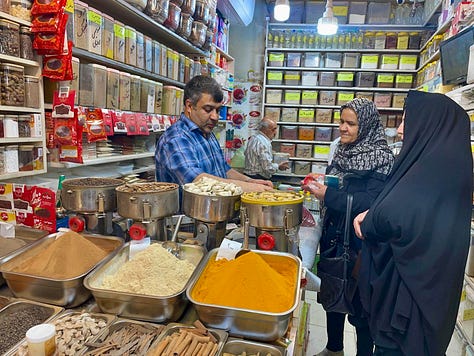
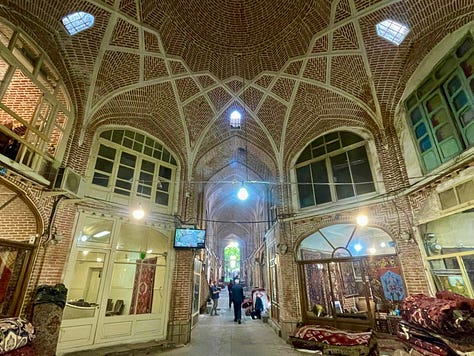
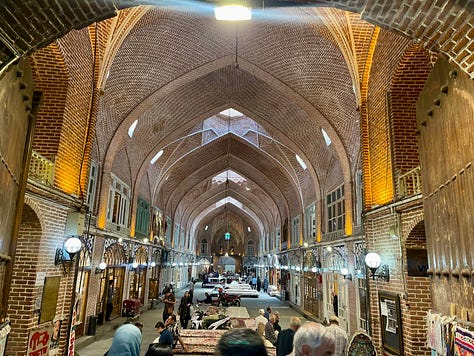
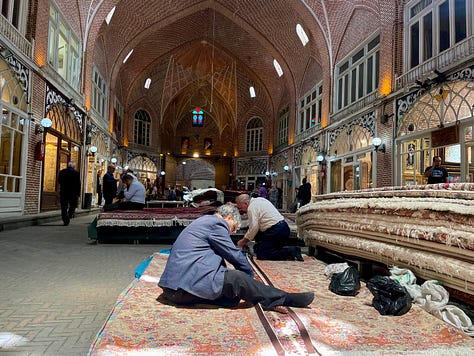
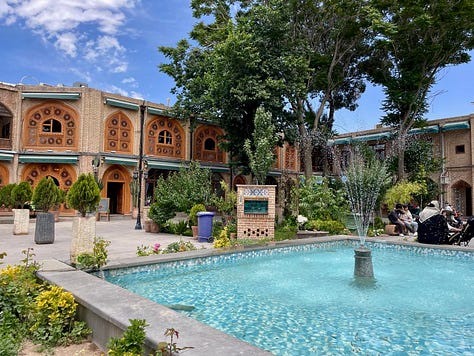
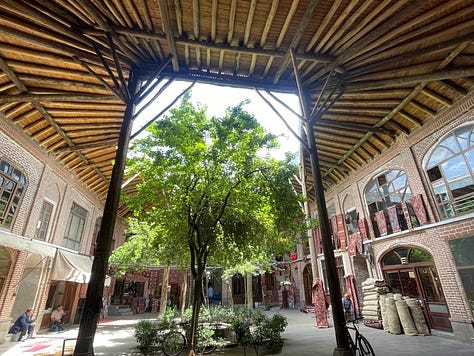

In the afternoon, we escaped the heat and pollution of the city by heading to the western foothills of Mount Sahand, (an extinct volcano) to Junbar (Gonbar). This whole area is blessed with rich soil. It used to be watered by mountain streams, but they are running dry due to a lack of snow in winter.
On the way, my cousin Mojtaba—an avid foodie who will travel hours for the best bread, milk, or sweets got us gurabia in Sardari. Saucer-sized almond macaroons, for our journey.
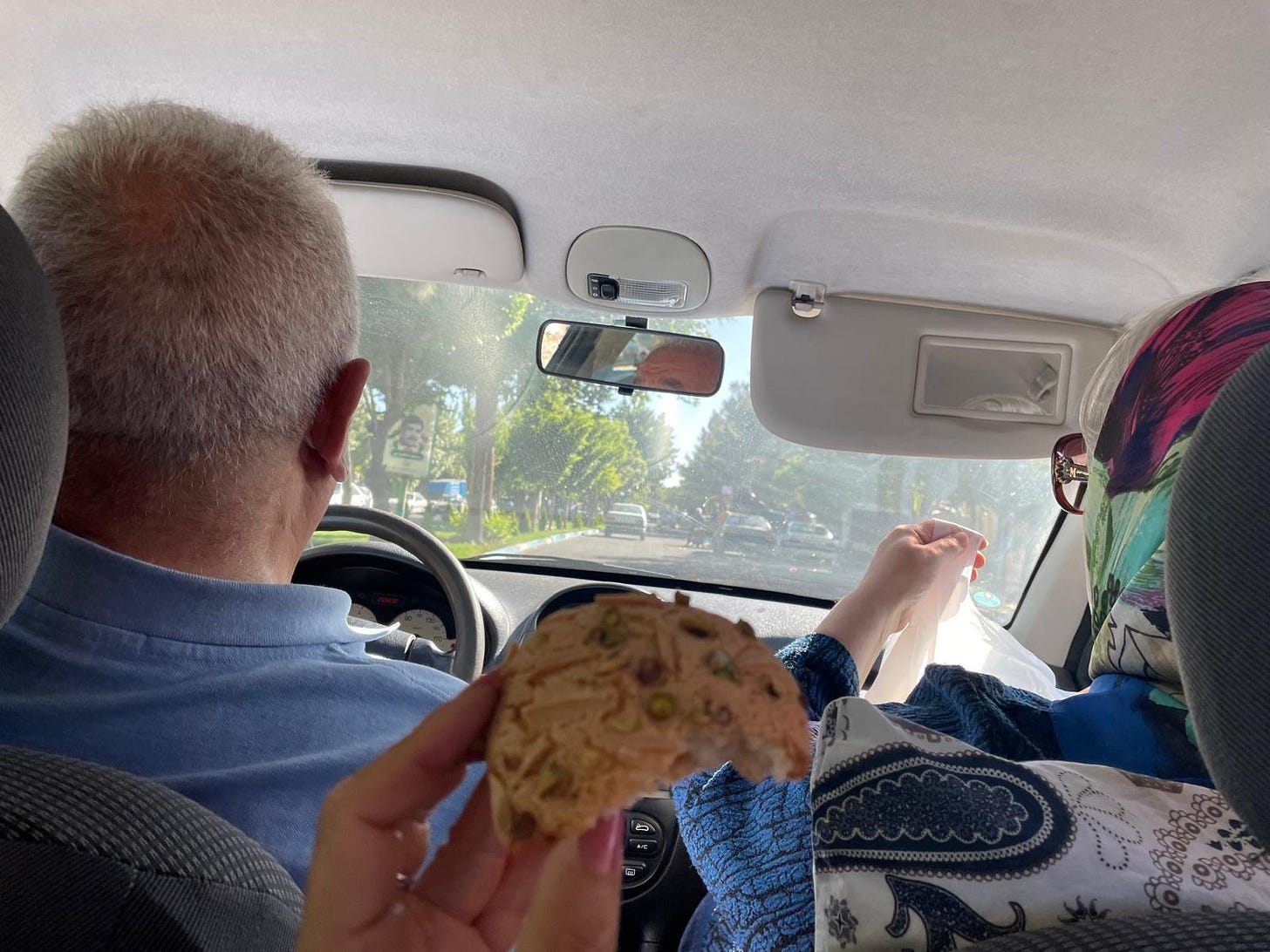
We passed through various small cities, each proud of its local produce—chickpeas, walnuts, grapes, or baghlava, which I’ll come back to later. As we drove into the mountains, the landscape began to change. We were in what I like to call "lava land." The mountains were becoming green again after winter, and there were many ash-flow tuffs: large, sand-coloured, soft rocks with holes in them, jutting out of the terrain. In these villages, modern houses had been built into the rocky landscape.
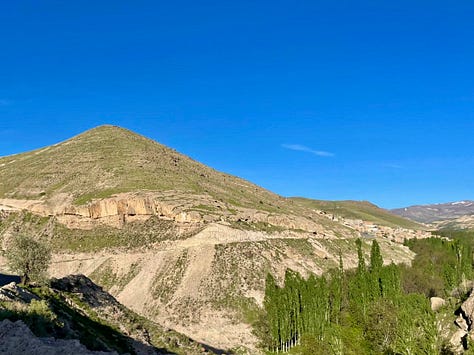
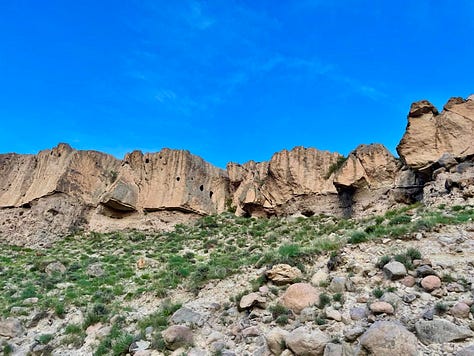
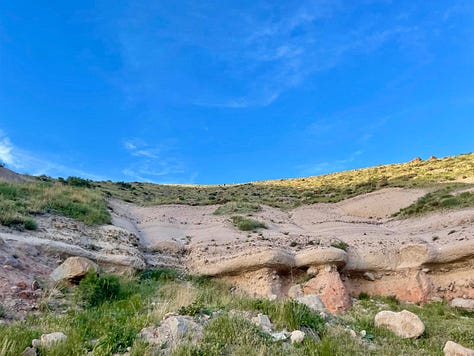
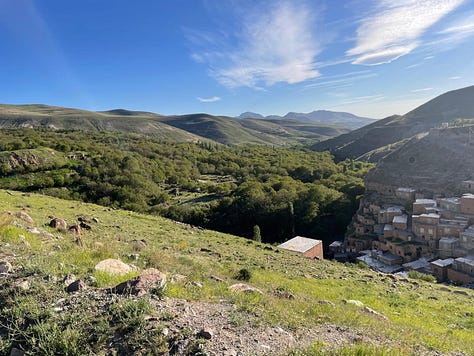
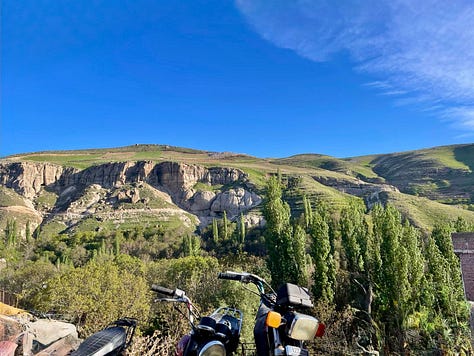
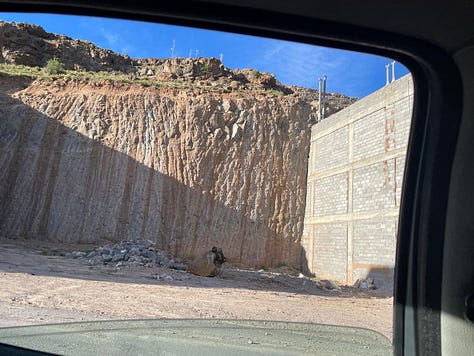
It’s rosewater season in central Iran, where it is hot and the gizil jul, or Damask roses, are in bloom. They are picked early in the morning in places like Kashan, Natanz, and Ghamsar, and then distilled into rosewater soon after.
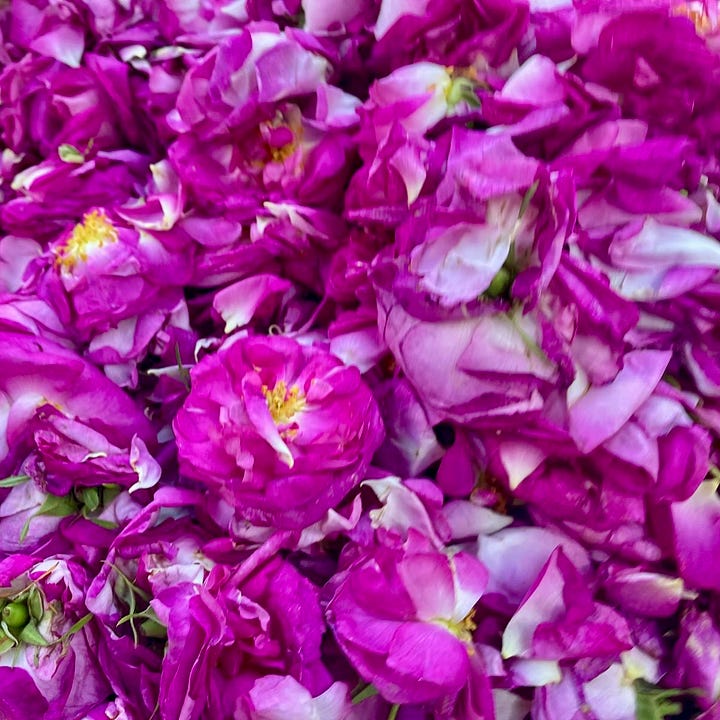
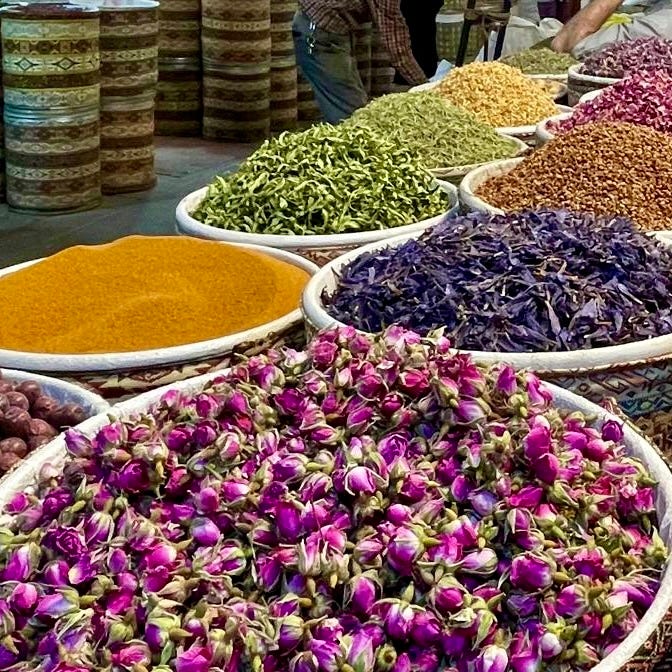
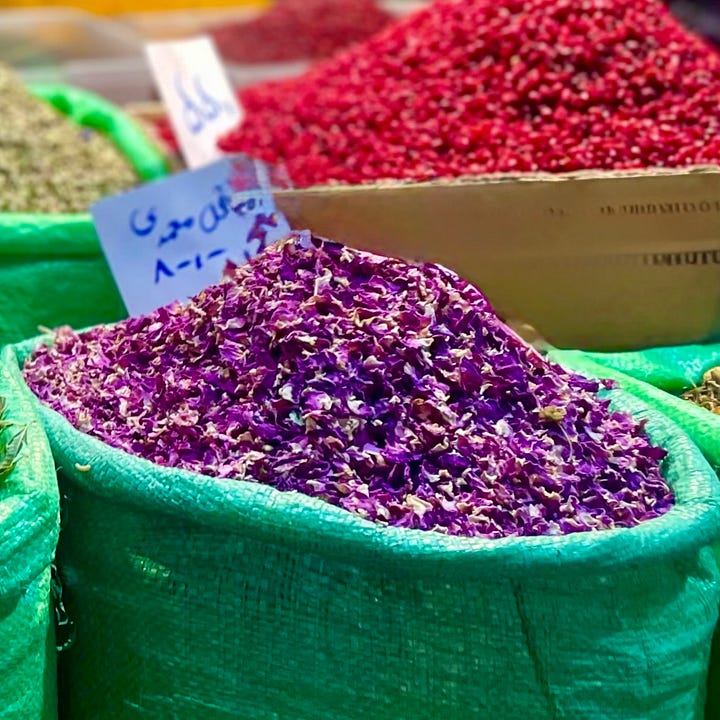
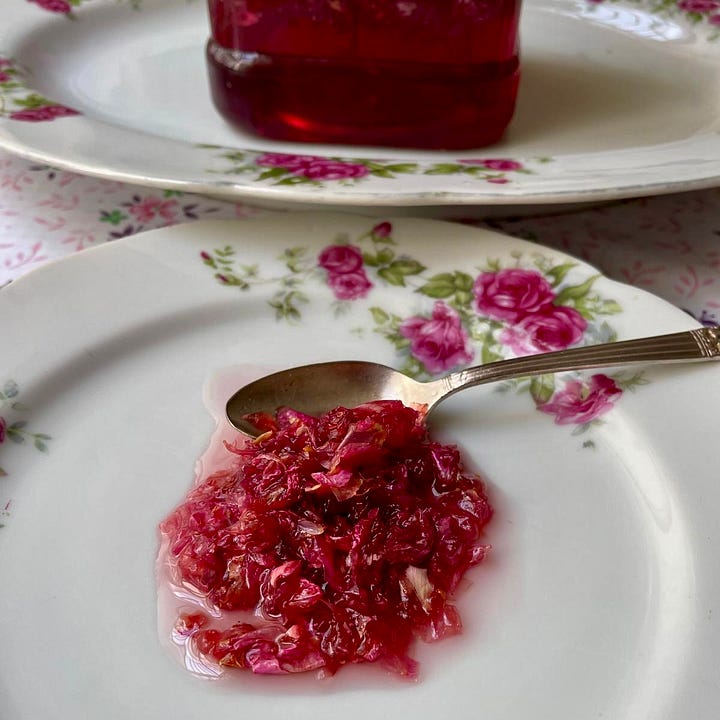
In Junbar, we only saw itburni (dog’s nose) or dog rose as it is known in the West!
The roses are planted on terraces, and I was told that when they bloom, the sight and scent are truly something to behold. With the area being at high altitude, the climate is much cooler. Here, the gizil jul bloom later, which I was told concentrates their flavour and colour. In Azerbaijan, we consider these the best flowers for making distillations, jam, and drying.
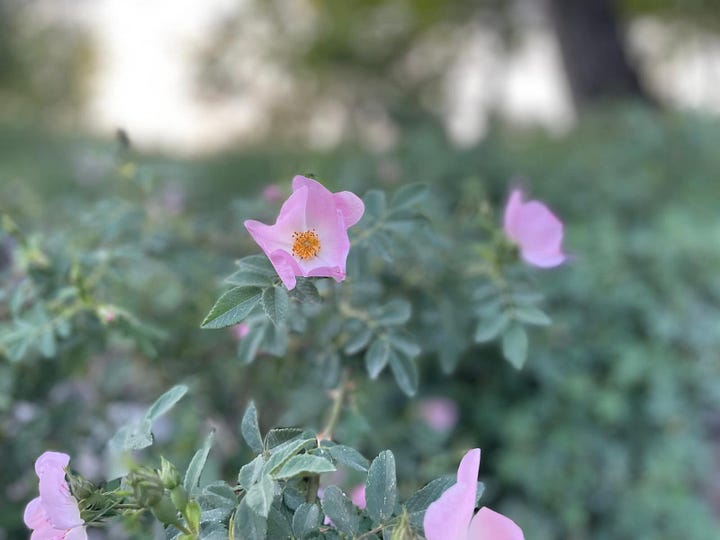
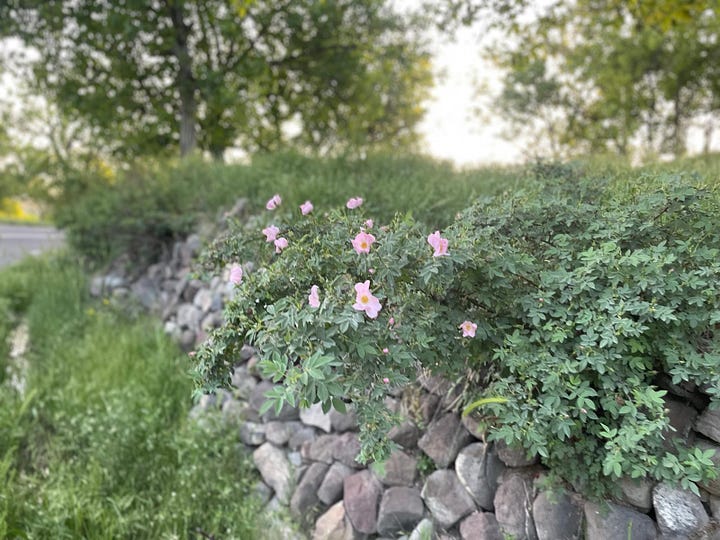
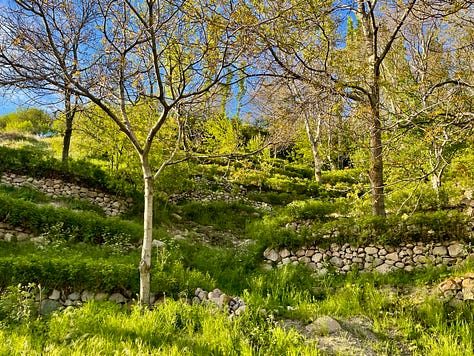
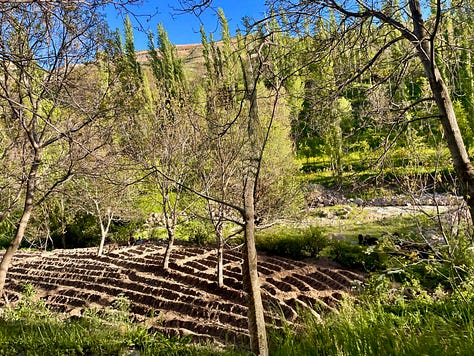
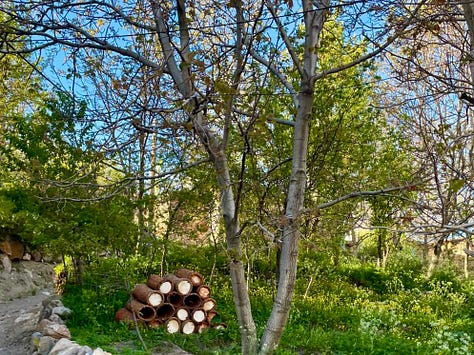
In some of the villages they had already started making thyme and other mountain herb distillations. We also saw women foraging for herbs, boys playing football, and shepherds grazing their flocks.
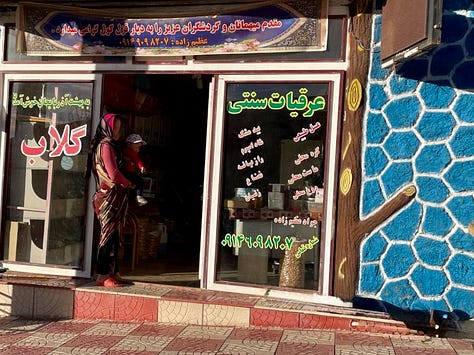
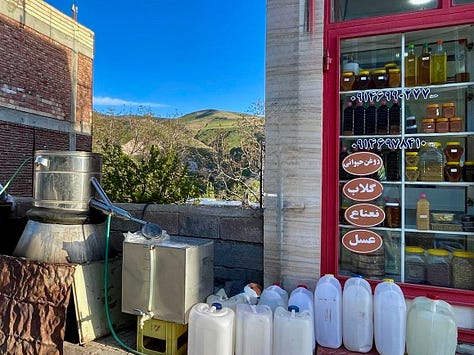
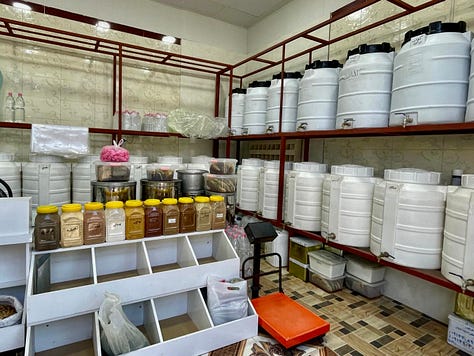


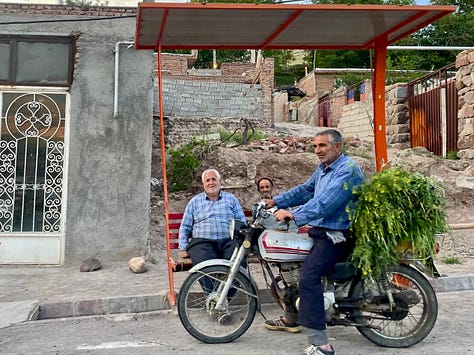
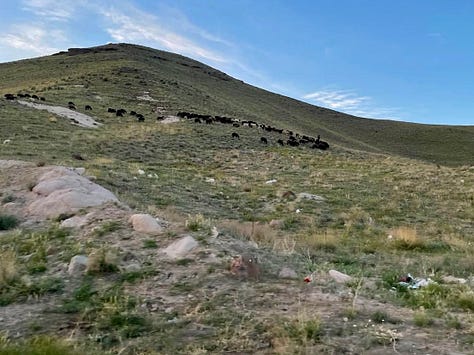

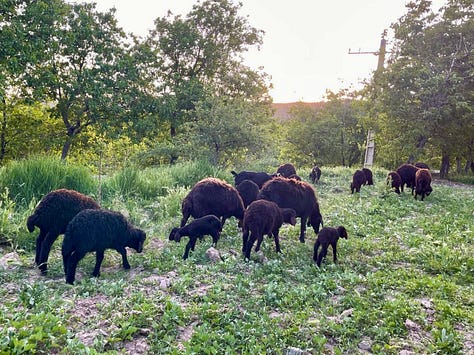
We stopped at Yenghjeh Dam (سد خاکی ینگجه) a local picnic spot for chai, gurabia, and melon that Susan had brought. That alone is a story for another day. But even on a short trip, everyone brings snacks. On this occasion, Mum had packed almonds, walnuts, and dates in pretty little dishes. Susan had brought our family tradition of two flasks: a large one for boiling water and a smaller one to use as a teapot for brewing tea. The melon had been neatly cut into a beautiful bowl, and we were each given fruit cutlery—little forks and knives. Mojtaba and I went rogue and bit into our melon directly from the forks—a bit like putting elbows on the table in the West.
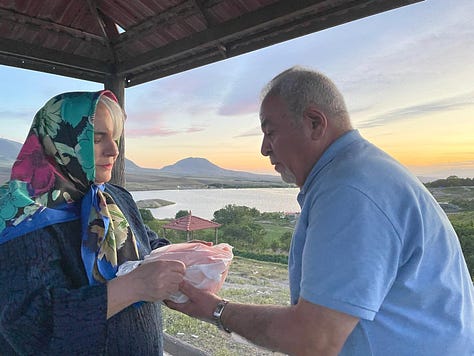
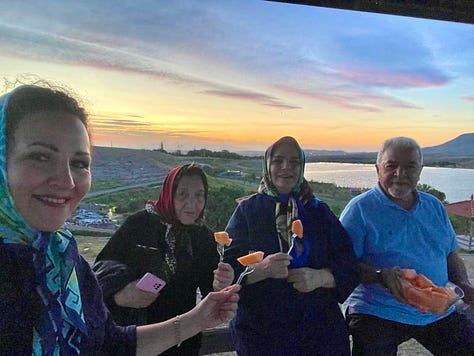
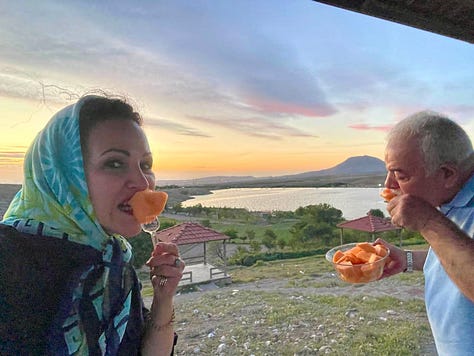
On our way back, we stopped in Jojan to buy baghlava. In Azerbaijan our baghlava is mainly nuts compacted between two layers of very thin filo, it’s also known as Sham baghlava (Lebanese baghlava). Susan gifted me a box each of almond and walnut baghlava.
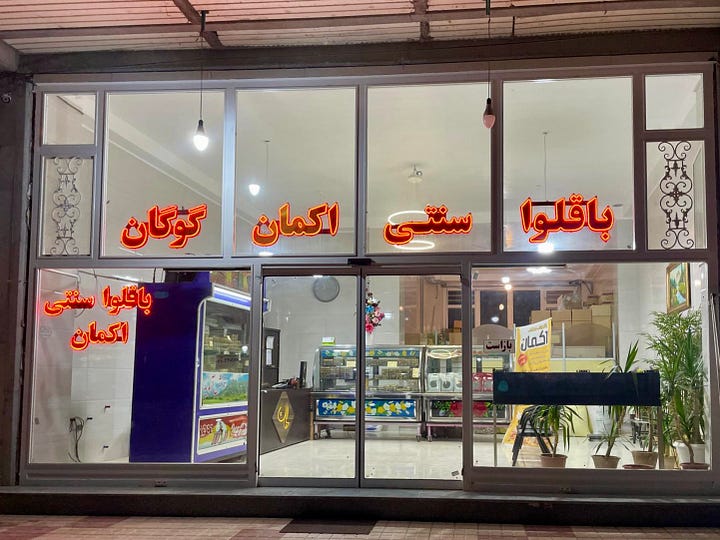
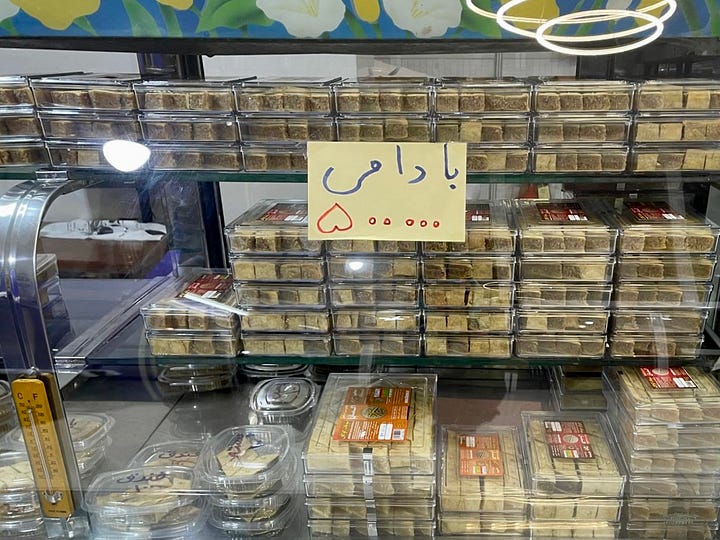
I hope you enjoyed this little trip.




Another fascinating blog Simi. Thank you for sharing your experiences with us. The Azerbaijan Region of Iran, its food and culture look so enticing. What a shame that currently the FCDO advises against travel there for British passport holders. I guess that, as an ethnic Azeri with family and friends there, you are much better placed than the rest of us to enjoy unhindered travel in the region. Go safely and keep the blogs coming!
Fabulous pics, Simi - and the descriptions of your travels - the landscapes, bustling towns & markets, the people you meet & the food, whether growing or being made/ tasted …are a delight to read. Thank you.